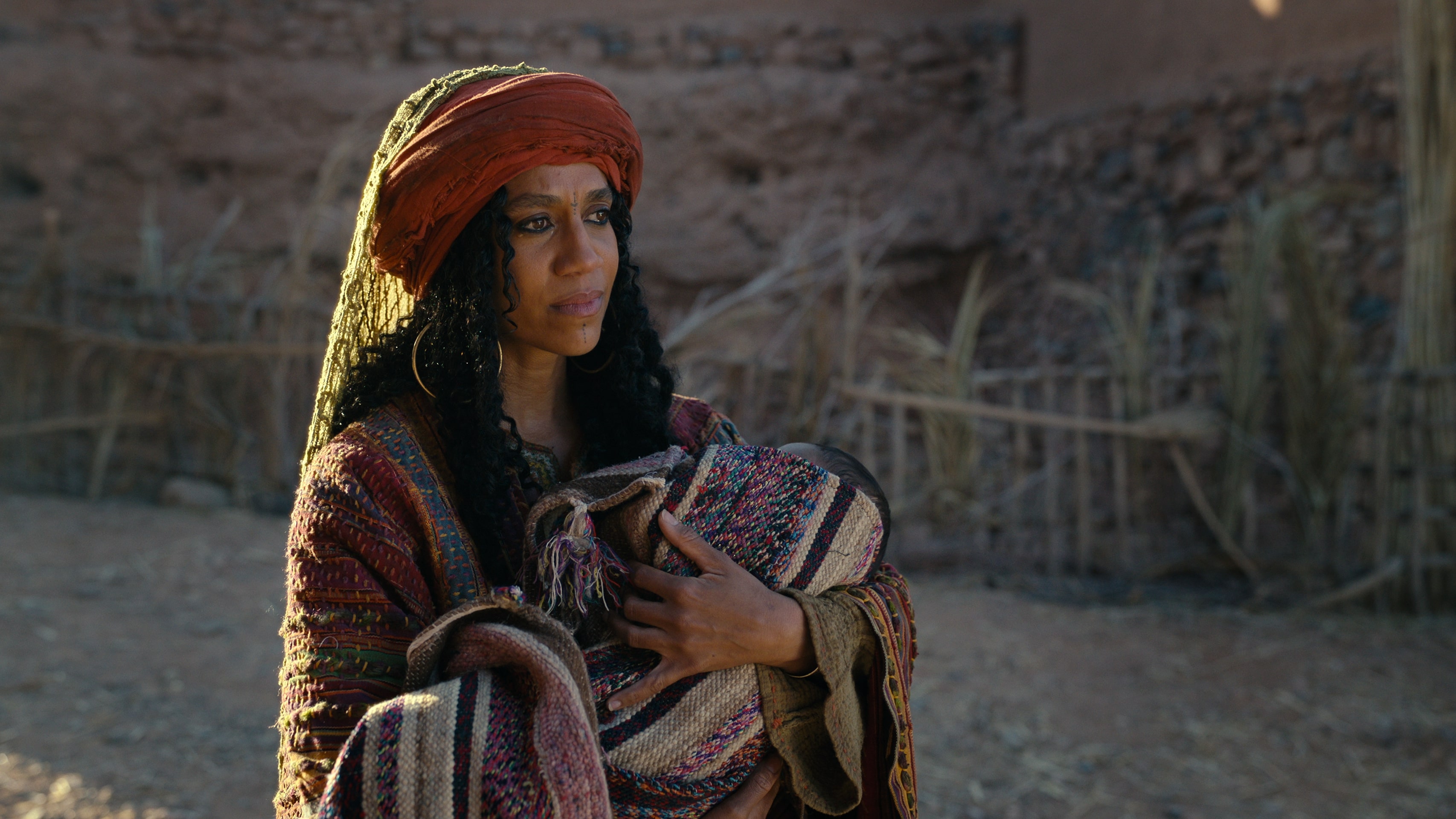Since Moses was arguably one of the most significant prophets in various faiths, it comes as no surprise Netflix’s ‘Testament: The Story of Moses’ lives up to its title in every way conceivable. After all, with the sentiments of so many involved, this docudrama couldn’t afford to deviate from actual scriptures, meaning we get a comprehensive picture of not just Exodus but also more. Yet for now, if you simply wish to learn more about this Hebrew leader’s personal life — with a focus on his marriage with the beautiful plus intelligent Zipporah — we’ve got the details for you.
Zipporah is Moses’ Only Named Wife
It was back when Moses was in a self-imposed exile to avoid the death penalty for killing an Egyptian taskmaster who’d been beating a Hebrew that he came across Zipporah for the first time. This Jewish-born but royal-raised man had no idea she was the daughter of desert county Midian’s priest-prince Jethro/Reuel, yet he still showed the utmost respect and quickly won hearts. According to Exodus 2:16 – 22, she’d been watering her father’s flock alongside her sisters the moment they came face to face right in the barren lands, only for him to save them from harassers.

The text actually reads, “[Moses] arrived in the land of Midian and sat down beside a well. Now, the priest of Midian had seven daughters. They came to draw water and filled the troughs to water their father’s flock, but shepherds came and drove them off. Moses rose to their defense, and he watered their flock. When they returned to their father Reuel, he said, ‘How is it that you have come back so soon today?’ They answered, ‘An Egyptian rescued us from the shepherds; he even drew water for us and watered the flock.’ He said to his daughters, ‘Where is he then? Why did you leave the man? Ask him in to break bread.’ Moses consented to stay with the man, and he gave Moses his daughter Zipporah as his wife.
Moreover, per the aforementioned original production, Moses had already long impressed his soon-to-be-wife while they were making their way to her home by walking in front of all the sisters. She was apparently before him at first, yet when harsh winds blew her skirts up a little, he decided to overtake so as not to look at her back or her skin or make her feel uncomfortable in any way. The connection between them was thus more than merely arranged — they genuinely cared for, loved, as well as respected one another, soon resulting in them welcoming two sons into their lives.
First came Gershom, whose name literally translates to “a stranger there” in Hebrew, followed by Eliezer or “Help/Court of my God” a few years later while they were still based in Midian. It was around this time that God appeared before Moses in the form of a bright burning bush on Mouth Horeb, ordering him to lead the Israelites to freedom from Egyptian enslavement. He’d actually taken up carefully tending to his father-in-law’s flock by this point, but since this was more important, he “took his wife and sons, mounted them on a donkey, and went back to the land of Egypt.”
However, following the Zipporah at the Inn incident, Moses ostensibly sent his wife and their children back to Midian for their own safety — he didn’t want to subject them to any possible danger. Then, it wasn’t until the Exodus from Egypt that they reunited; it was actually Jethro who’d brought the entire family to this prophet “in the wilderness, where he was encamped at the mountain of God” upon hearing everything that the latter had done for his people. Though things changed a while later as Moses apparently tied the knot with another woman, a “Cushite” or Ethiopian woman whose name has never once been mentioned in any known text.

Some do suggest this woman could be Zipporah herself, but no real link between Midianites and Ethiopians has ever been uncovered, plus both of Moses’ elder siblings objected to this marriage. And because he’d tied the knot with the mother of his sons roughly 40 years prior by this point, it doesn’t make sense for any doubts or questions to be raised, indicating it was someone new. The sole account of her is in Numbers 12:1, which clearly states, “Miriam and Aaron spoke against Moses because of the Cushite woman he had taken [as his wife]: ‘He took a Cushite woman!'”
Moses and Zipporah Separated to Avoid Danger
As indicated above, Moses sent Zipporah, Gershom, and Eliezer back to his wife’s homeland following the incident at the inn wherein God tried to smite him for failing to circumcise Gershom. Thankfully, the matriarch felt this higher power on their tail when they settled in at a local establishment one night while on their way to Egypt, driving her to take action and save everyone.
Exodus 4 expresses, in part, “It came to pass, on the way to the lodging place, that the Lord met him [Moses] and sought to kill him. Then Zipporah took a flint and cut off the foreskin of her son [Gershom] and cast it at his feet, and she said: ‘Surely a bridegroom of blood art thou to me.’ So he let him alone. Then she said: ‘A bridegroom of blood in regard of the circumcision.'” The only thing that has always been unclear from this is whose feet she left the foreskin by — the metaphorical feet of God or the literal feet of Moses or Gershom.
Read More: Who is the Narrator and Voice of God in Netflix’s Testament: The Story of Moses?


You must be logged in to post a comment.